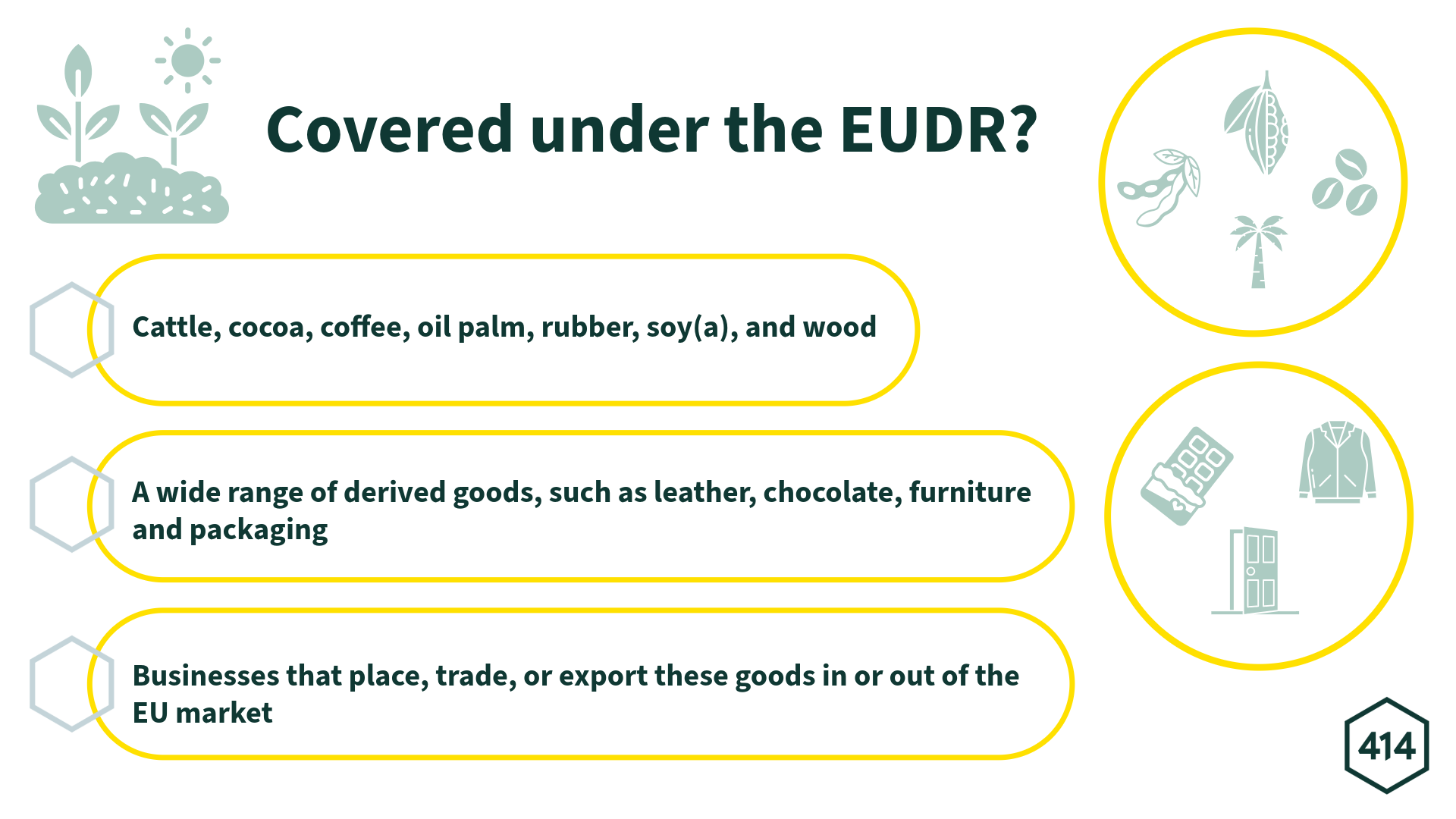Upcoming Changes to the EU Deforestation Regulation
The EU Deforestation Regulation (EUDR), which is set to begin applying at the end of 2025, has been undergoing quiet but significant revisions. For investors with portfolio companies in sectors like agriculture, food, consumer goods, logistics, or timber, or with supply chains tied to these industries, now is the time to pay close attention.
On 15 April 2025, the European Commission published updated guidance, new FAQs, and a draft Delegated Act that proposes targeted adjustments to the regulation. The goal is to reduce complexity, respond to stakeholder concerns, and clarify how companies can demonstrate their products are deforestation-free.
The public consultation on the draft Delegated Act closed in May, and the Commission is now preparing to adopt it.
In parallel, a broader Environmental Omnibus simplification package, expected this fall may also sweep in additional changes to the EUDR.
Who’s Affected by the EUDR amendments?
This regulation affects not only primary producers, but also manufacturers, traders, and importers with indirect exposure, often deep within global supply chains.

If your portfolio companies operate in food and beverage, retail, consumer electronics, furniture, transport, logistics, or agribusiness, there’s a strong chance EUDR applies.
What Changes are Expected under the EUDR?
The updated guidance and draft Delegated Act introduce a series of simplification measures aimed at reducing administrative burden, estimated by the Commission at 30% overall. Key changes include:
Group Submissions and Annual Reporting
- Large companies can reuse existing Due Diligence Statements (DDS) when re-importing goods already placed on the EU market.
- Authorised representatives can file DDS for company group members.
- Annual DDS submissions are now allowed, covering batches not yet harvested or manufactured.
- Large downstream firms can use reference numbers from their suppliers’ DDS instead of conducting full due diligence again.
Clarified Scope Exclusions
- Waste, second-hand goods, product samples, and accessory materials are excluded.
- Packaging is only covered if sold as a standalone product.
- Freight forwarders, customs agents, and other non-owner intermediaries are not held liable, unless they place products on the market themselves.
Geolocation Data
More clarity on how geolocation info is shared across supply chains in the EU’s Information System.
What’s Still Unclear?
The country benchmarking system which classifies source countries by deforestation risk remains controversial. Parliament passed a non-binding resolution in July 2025 calling for its overhaul, citing concerns over outdated data, lack of regional differentiation, and overly blunt methodology.
While not legally binding, this signals continued political friction. Several member states, including Austria, Italy, Finland, and others, have argued that current rules are too burdensome for low-risk countries and farmers. More changes may emerge through the fall Environmental Omnibus package or future delegated acts.
What Do these EUDR Changes Mean for Investors?
While simplification efforts may ease compliance for some, they also signal regulatory uncertainty. Here’s what to consider:
- Risk management needs recalibration: Delays and shifting requirements may obscure which standards apply to whom and when. We’ll stay on top of any changes and update this post as the process unfolds. We are also a message away for specific questions regarding your business’ sustainability strategy
- ESG due diligence still expected: Even if obligations are reduced, stakeholder expectations around deforestation and traceability are unlikely to ease
- Visibility gaps may grow: Less public data and fragmented reporting could make it harder to assess supplier practices, trace material origins, or benchmark against peers.
- Sustainability thesis at risk: Companies that have invested early in traceable, deforestation-free supply chains were poised to benefit under the EUDR, gaining a competitive edge as compliant, low-risk partners. But with delays and potential dilution of the rules, these front-runners may now find their efforts under-recognised, at least until the regulatory landscape stabilises and once again rewards credible sustainability performance.
Final Thought
The EUDR is still moving ahead, but not in a straight line. As the EU balances environmental goals with regulatory competitiveness, investors should stay engaged, well-informed and cautious. Encouraging investees to keep building due diligence capacity, even if obligations shift, may be the best way to future-proof sustainability strategies and ensure resilience in an evolving regulatory landscape.

.png)

.png)

